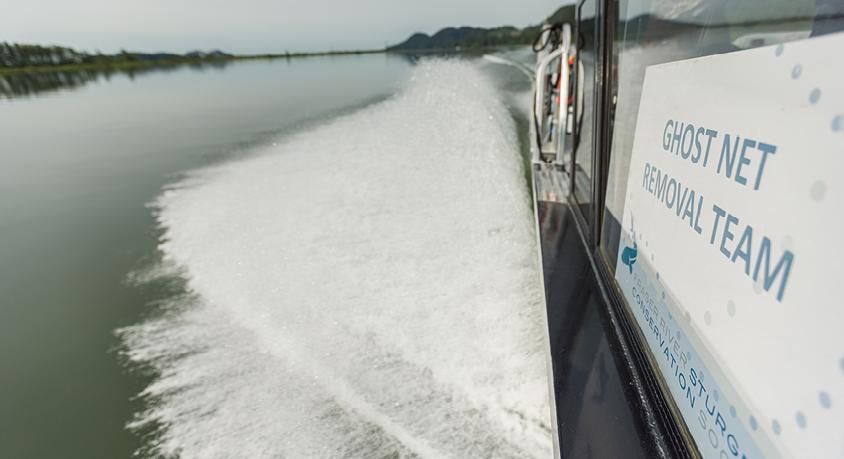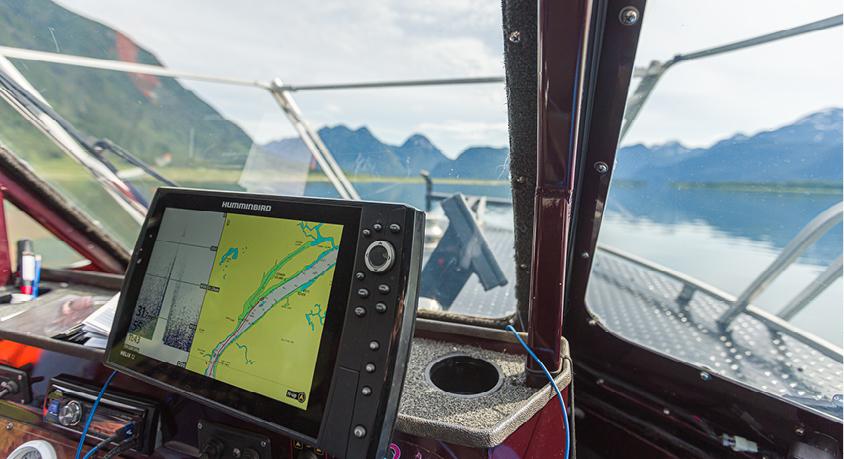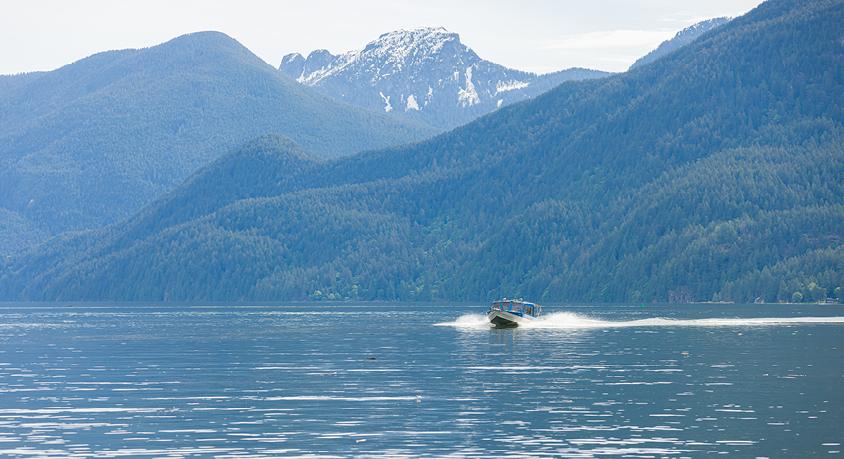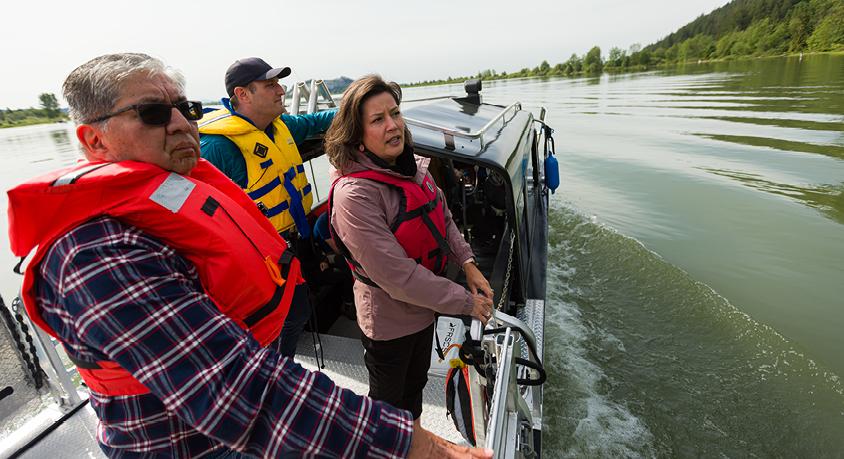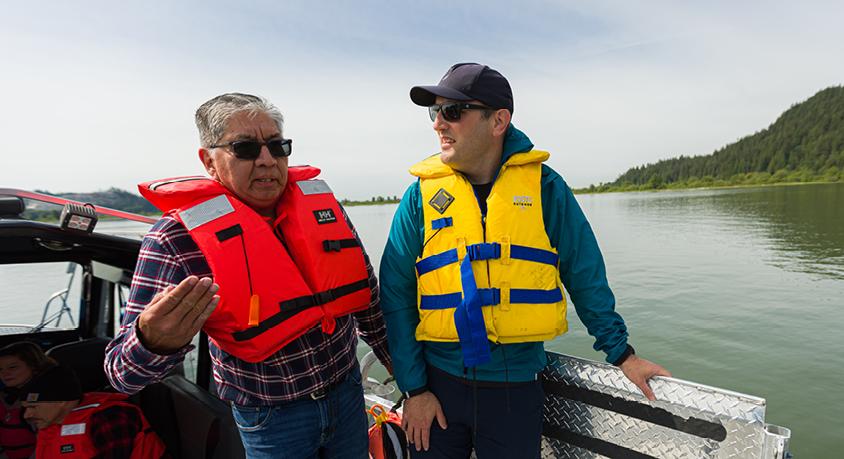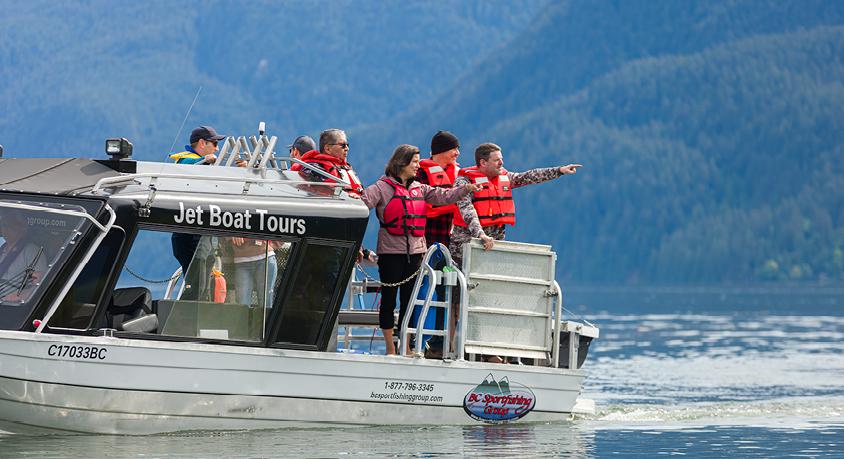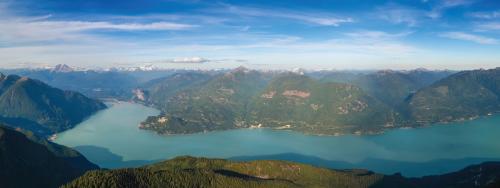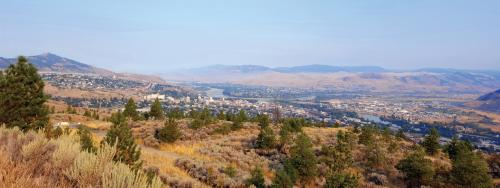Since 2000, the Fraser River Sturgeon Conservation Society (FRSCS), a non-profit established by Rick Hansen, has run a white sturgeon monitoring and tagging program with the help of a large number of volunteers. The field data gathered through this program is used to generate annual estimates of white sturgeon abundance, growth rates and to forecast future abundance trends.
“This program is one-of-a-kind. No one else is doing this kind of sturgeon monitoring and research,” says Sarah Schreier, executive director, FRSCS. “Since the beginning, we’ve collected over 170,000 data samples and tagged over 70,000 fish. The result is one of the best baseline population models on aquatic species like this in the world.”
The population data the society has gathered shows mid-size and large white sturgeon are continuing to grow into larger size classes, but the juvenile population is in decline. “The larger classes are surviving and becoming brood stock, which is great, but the decline of the juvenile population is concerning,” says Sarah.
Data collected helped identify threats to sturgeon survival
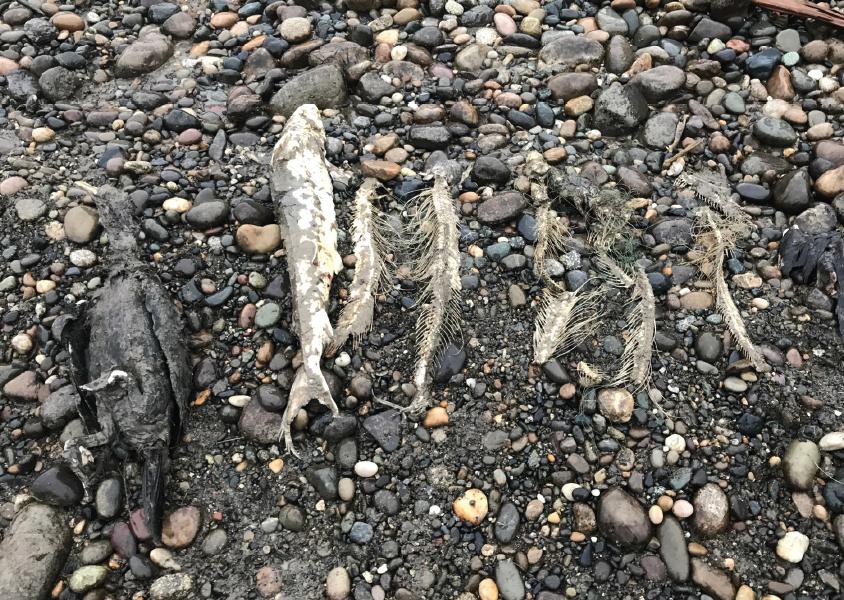
The data collected has also helped identify the greatest threats to the species’ survival including loss of habitat and food supply, poaching and mortality due to the use of unmonitored gill nets by fisheries. “The use of gill nets by fisheries is a significant cause of sturgeon mortality,” Sarah explains. “Fisheries aren’t deliberately targeting sturgeon, but because salmon are in their nets, and sturgeon love salmon, they come down to the nets for the salmon buffet and get tangled.”
When gill nets are abandoned or lost by fisheries, these unmonitored “ghost nets” continue to catch fish of all kinds, raising the mortality rate of sturgeon, and other species, even higher. Two years ago, the FRSCS launched a ghost gear removal initiative to remove these ghost nets, as well as other abandoned fishing gear, from the Fraser River.
“The ghost gear removal initiative has been one of the most impactful projects we’ve undertaken since the launch of our population monitoring and assessment program in 2000,” Sarah states. “Clearing these nets and other gear out of the river reclaims lost habitat. We know that preserving and reclaiming habitat is huge for the survival of species.”
Ghost gear removal pilot brought fishing communities together

Sarah and her team of volunteers ran the ghost gear removal initiative initially as a pilot project, bringing different fishing communities together for the common goal of helping the white sturgeon survive.
“We had First Nation and non-First Nation fishers team up to share knowledge and remove the nets,” she says. “Fishers know where the trouble spots are—where the nets can get hung up and are likely to be found. It’s been a great opportunity to bring people together from different communities to make a difference. In the first two years of the project, the teams removed more than 4,800 feet of net from the Fraser River.”
The project covers 200 kilometres of river, from the mouth of the Fraser to just past the town of Yale. Teams go out in their boats every year to remove nets approximately twice a week from early December to March. “We don’t go out when there are active fisheries going on,” says Sarah. “We go out once the main commercial fisheries are all finished for the year and we stop going out before the early spring chinook fishery opens up.”
FortisBC support helped the project to continue
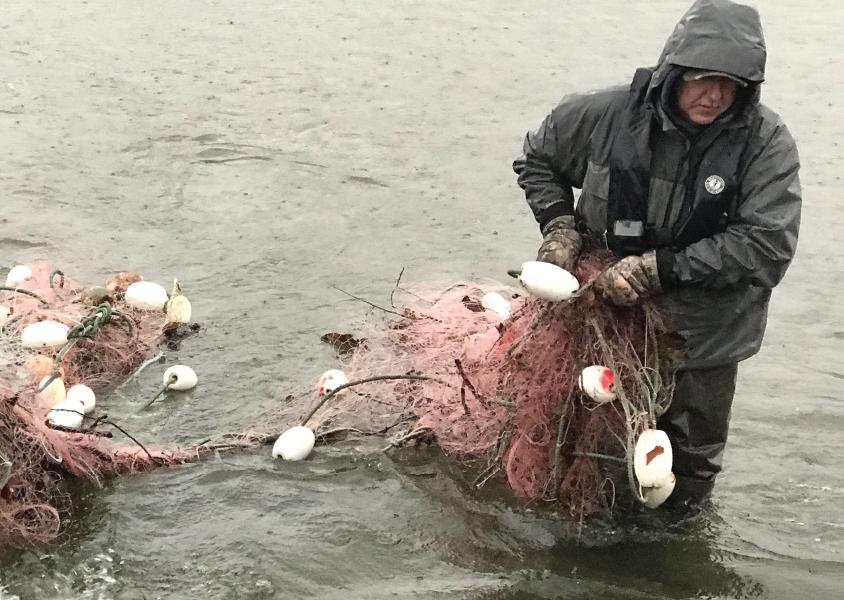
Funding received from the provincial government through the Habitat Conservation Trust Foundation made the success of the pilot project possible, but the FRSCS knew that in order for the project to continue they would need to find another source of funding. When FortisBC heard about the ghost gear removal initiative, it made a donation to support it. That opened the door for the FRSCS to apply for additional government funding. “Because of FortisBC, we were able to show there is corporate and community support for this initiative, which encouraged the federal government to get behind it as well,” says Sarah.
“We've learned so much from the FRSCS about the importance of preserving habitat for white sturgeon and other fish species that live in the Fraser River,” says Courtney Hodson, community relations manager, FortisBC. “The FRSCS ghost net removal initiative is playing such a vital role in preserving fish species’ habitat, we knew we wanted to be a part of it.”
In the project’s third year, the additional funding provided by FortisBC helped Sarah and her team of volunteers get out on the water more frequently to do surveys and gear retrieval than they had in the previous two years. They were also able to implement a new survey strategy that contributed to a significant increase in the amount of gear they were able to find.
“Thanks to the additional FortisBC funding, we were able to do nine helicopter flyover surveys,” says Sarah. “Aerial surveys are incredibly valuable because you’re seeing things from a very different vantage point. We found gear washed up high on gravel bars, tangled in trees or partly buried—in places that we would never have seen from the water. The flyovers definitely helped us move our initiative to a much higher level.”
By the end of the project’s third year, society volunteers had pulled almost as much gear out of the Fraser as they had during the previous two years combined. “We pulled approximately 4,000 feet of gear out of the Fraser this past year,” she says. “That's more than 8,000 feet combined over the last three years."
Sarah is encouraged by the results of the project so far, and she doesn’t only mean the number of nets they’ve been able to recover. “Bringing diverse fishing communities together is building bridges and relationships across communities,” she notes. “This project has inspired conversations about fishery best practices and the use of more sustainable fishing methods.”
Sarah points out that one of the things that everyone involved in the project could agree on was the need to monitor gill nets more frequently. “Just by pulling their nets every two or three hours, instead of leaving them unattended all day, means they can release sturgeon much quicker if they find them,” she says. “We see some folks are already doing that – they see value in it. They see they’re not losing their gear and they’re helping to reduce bycatch mortality for all of the fish species in the river. I like to think this change in behaviour may have been inspired by our project.”

